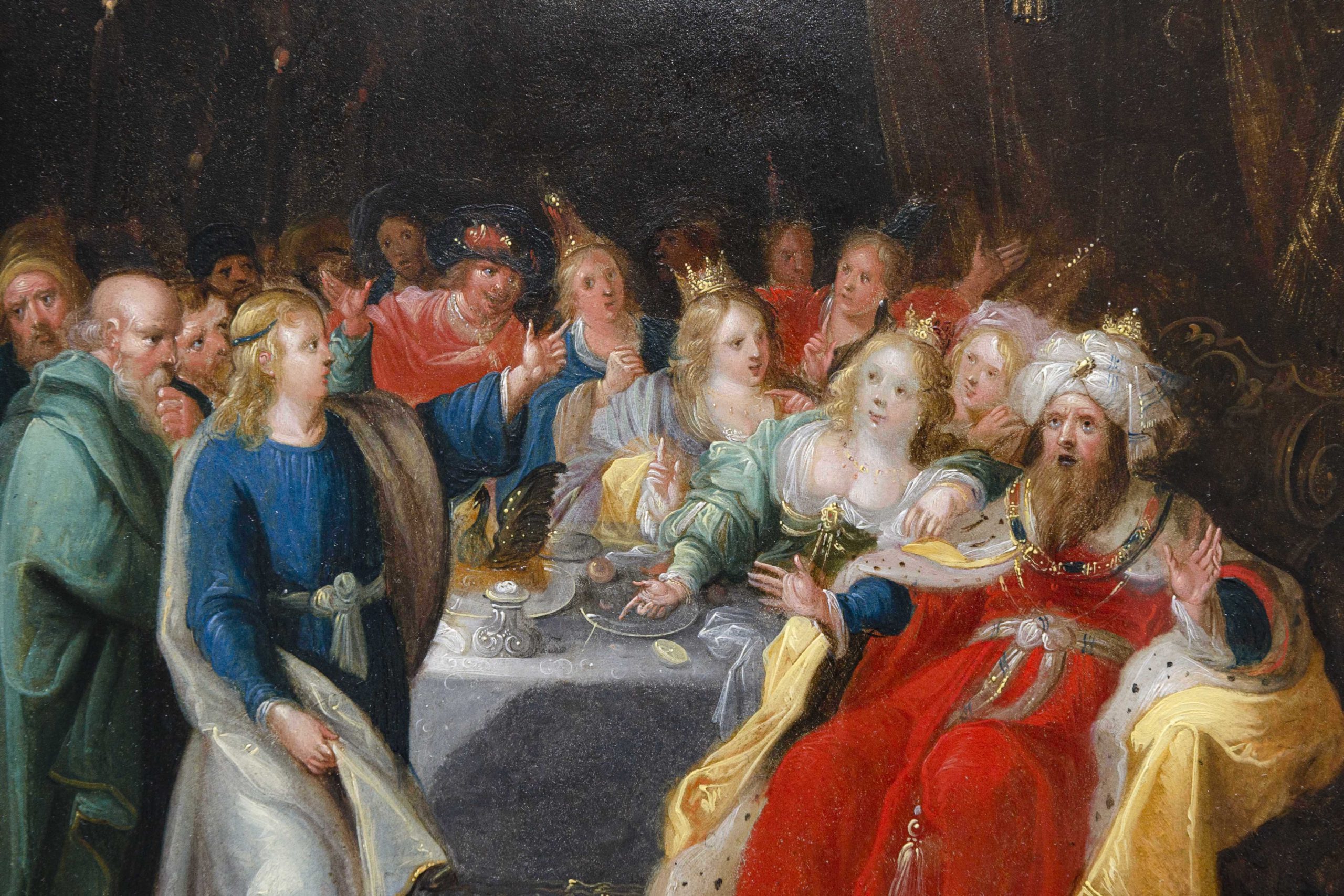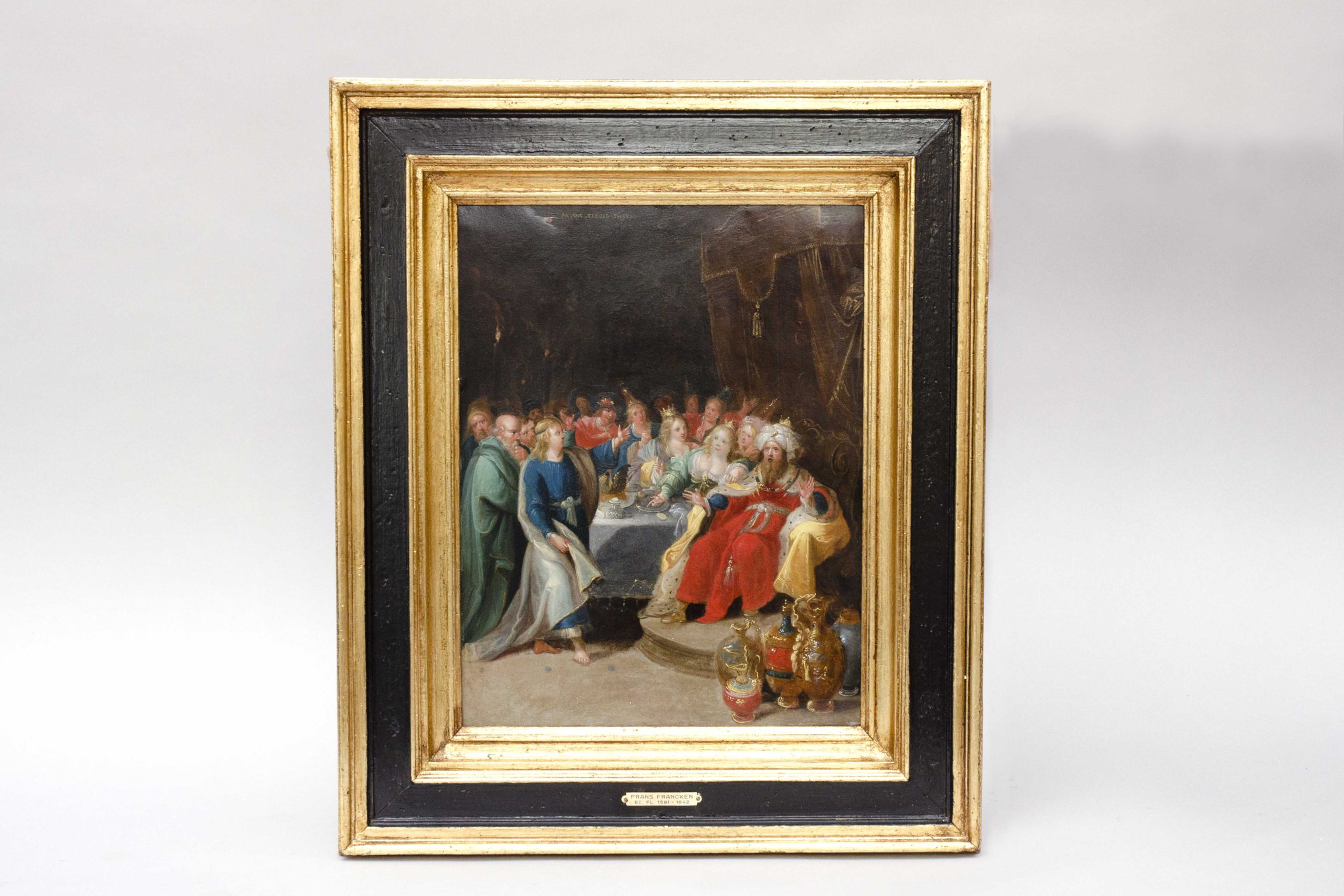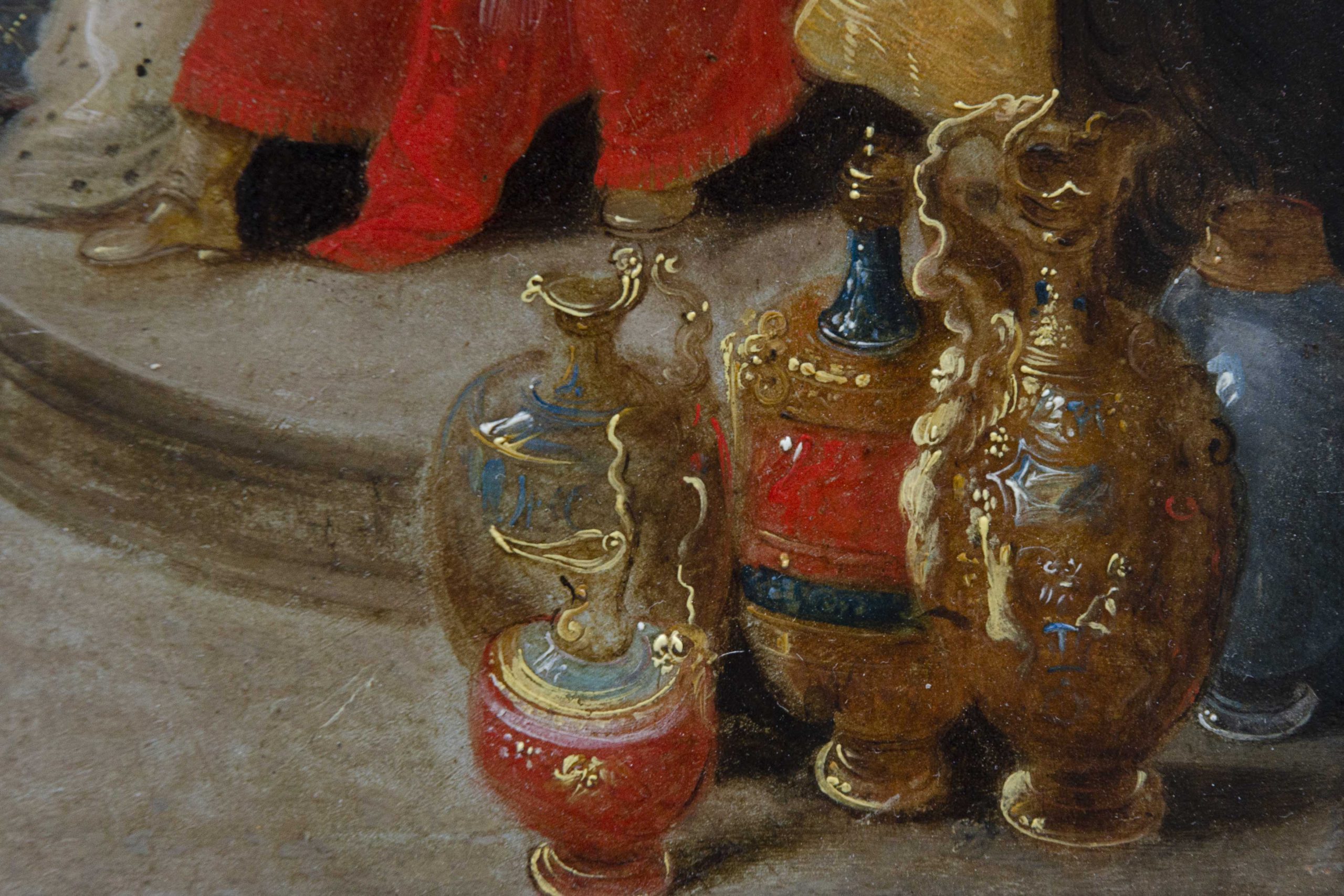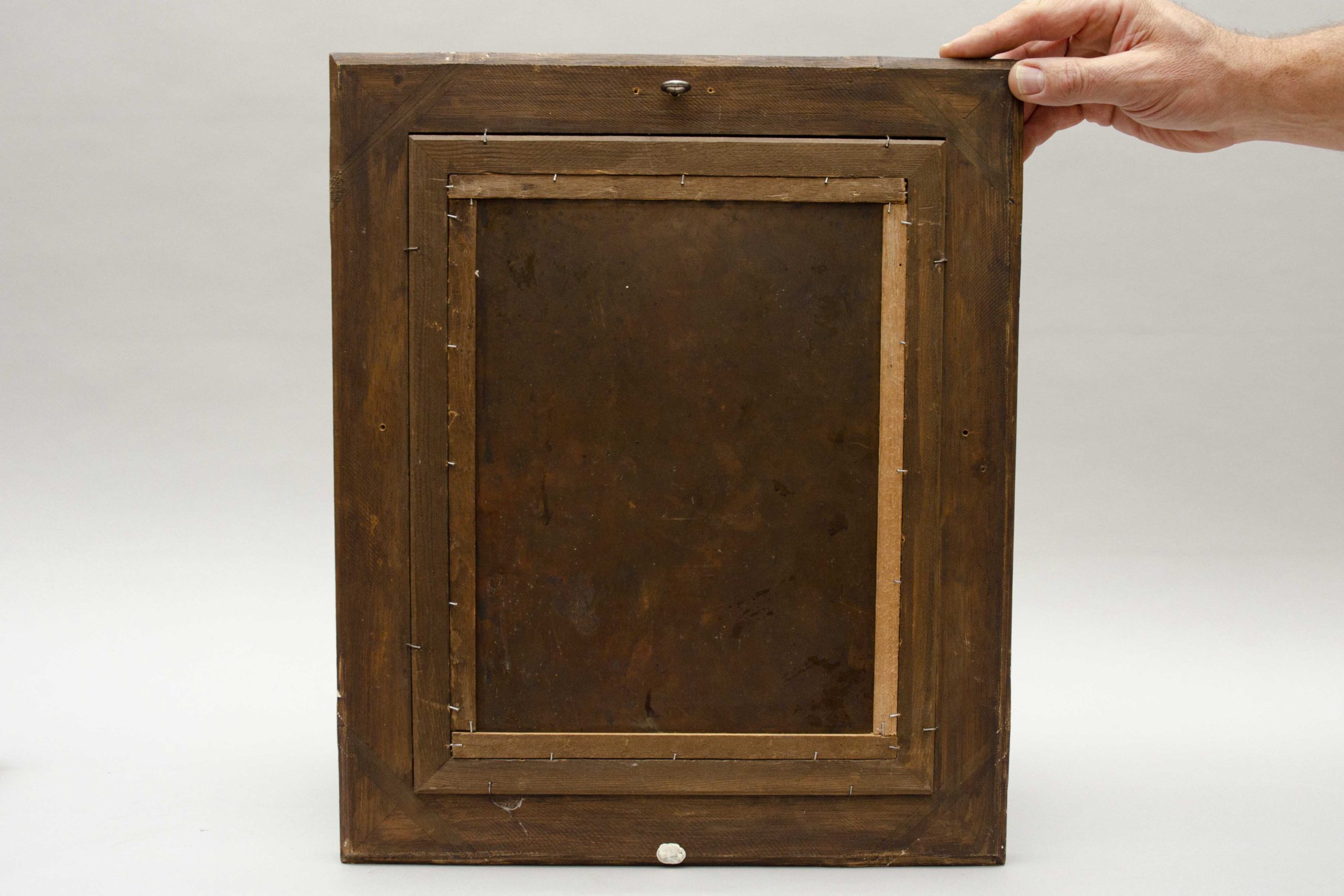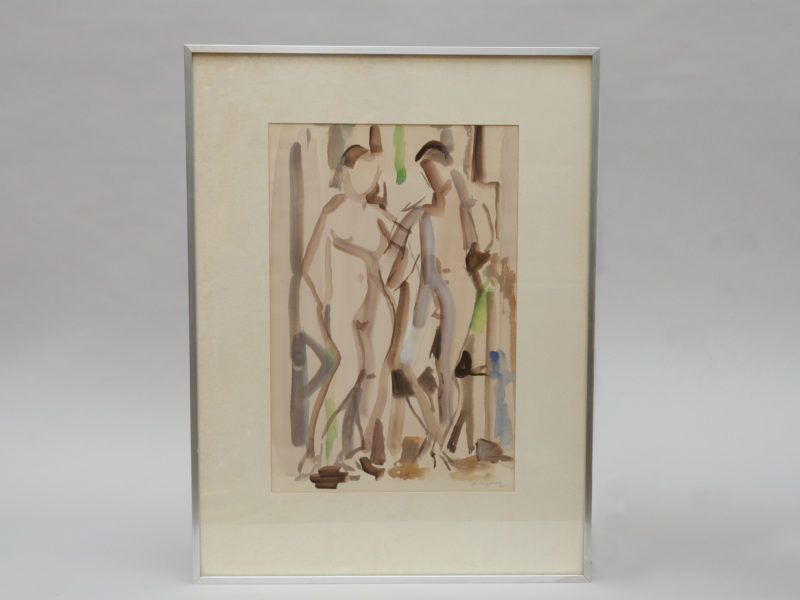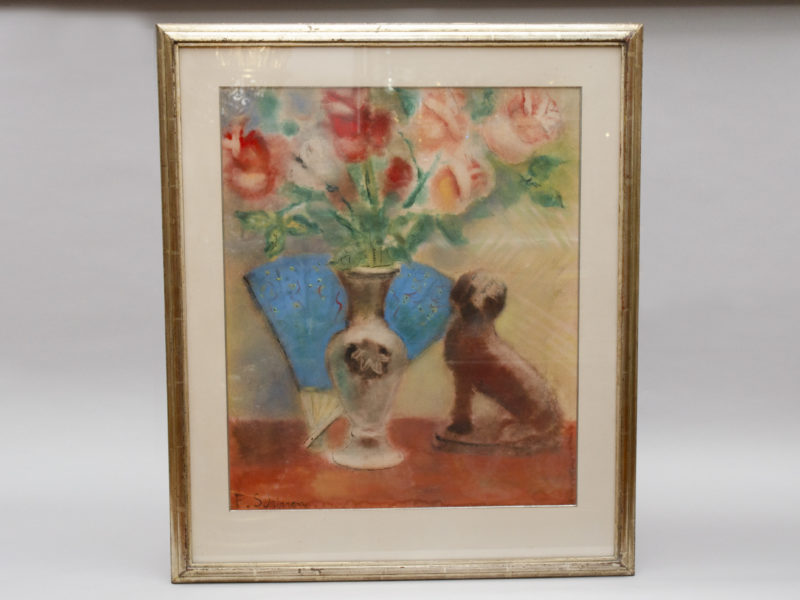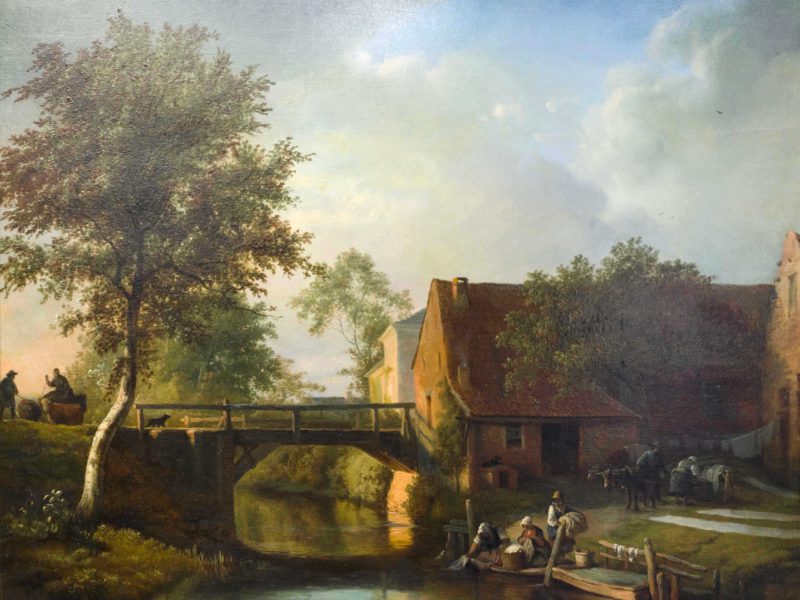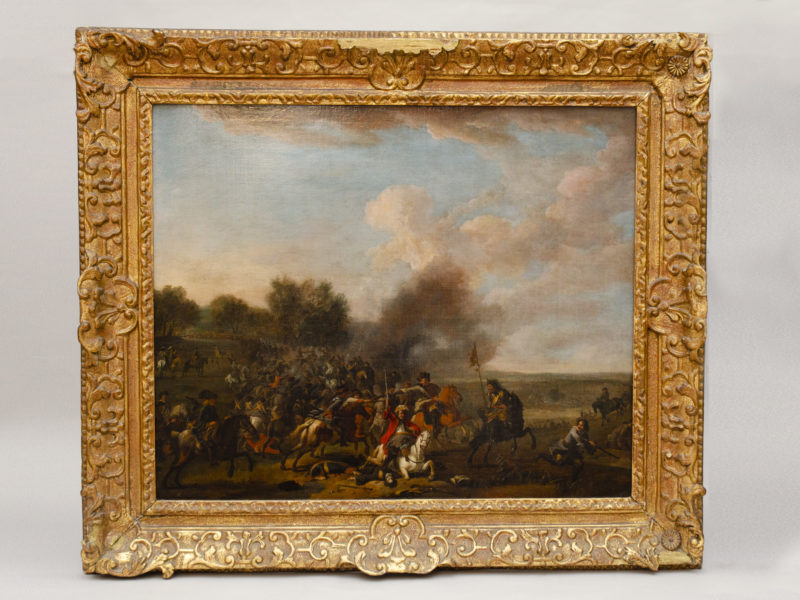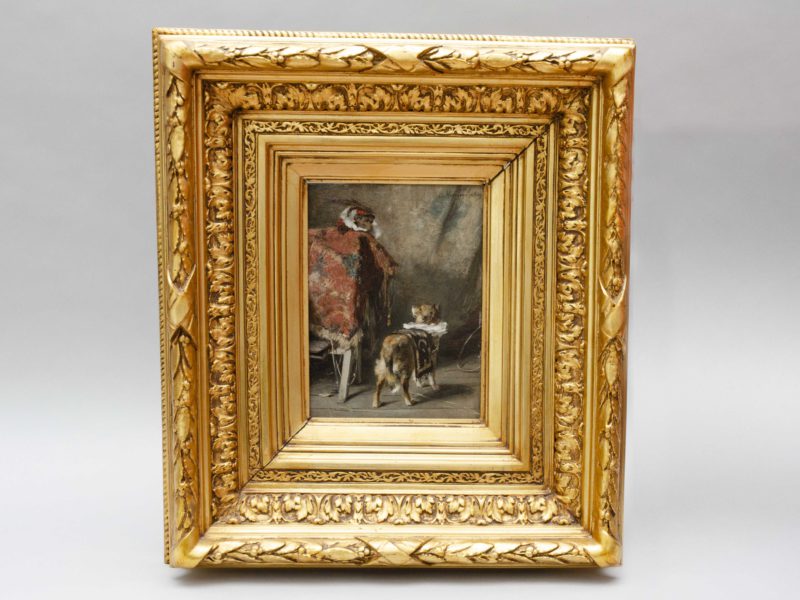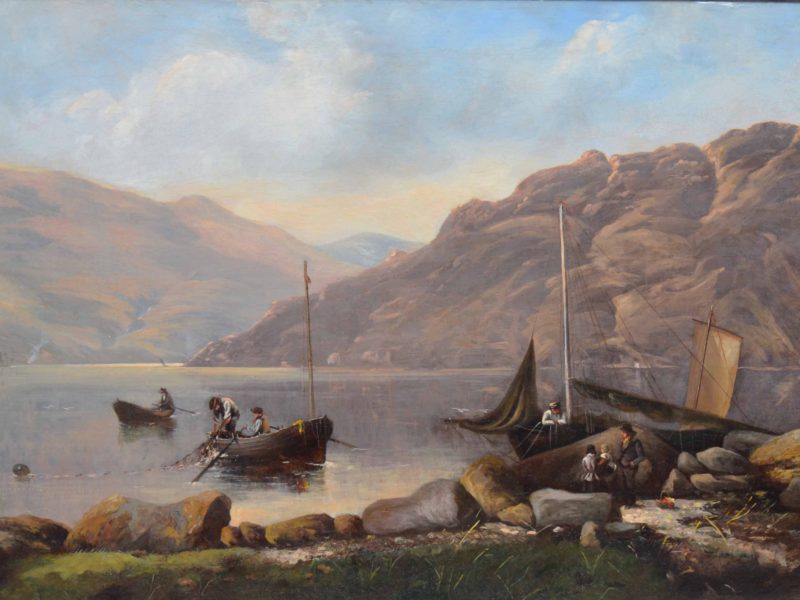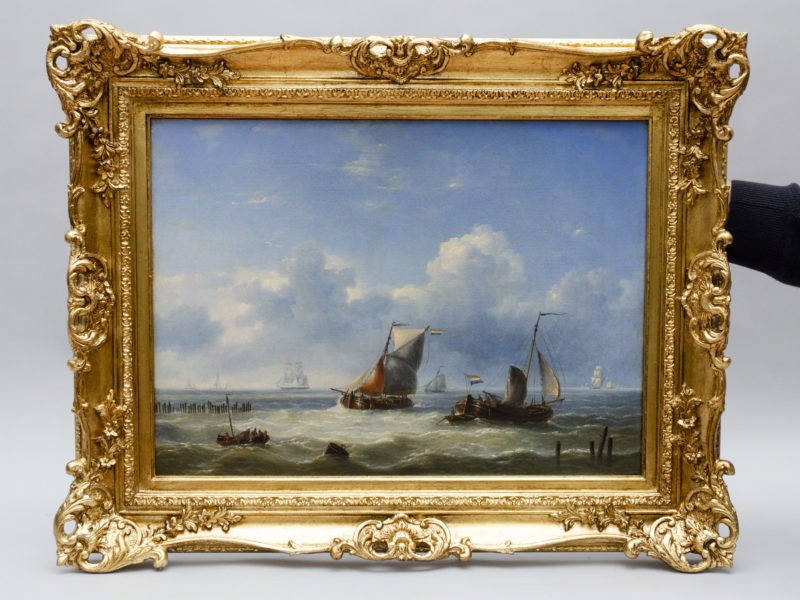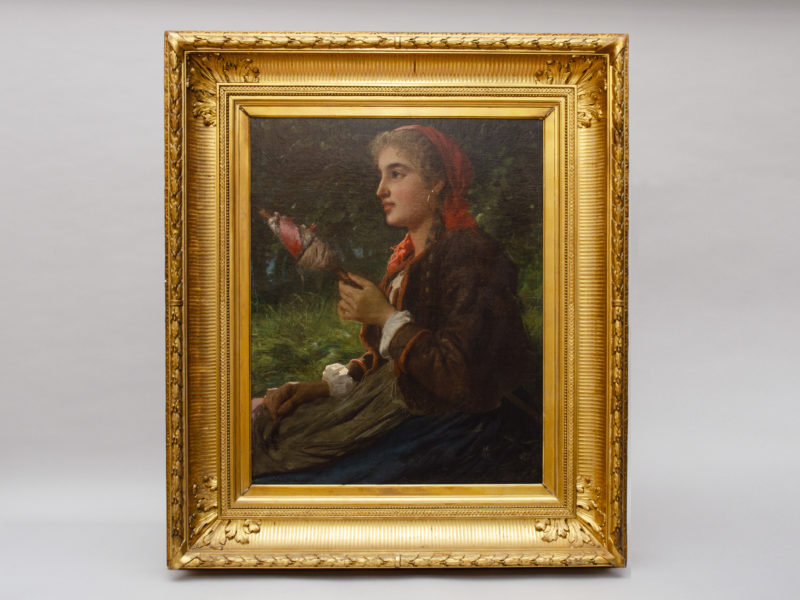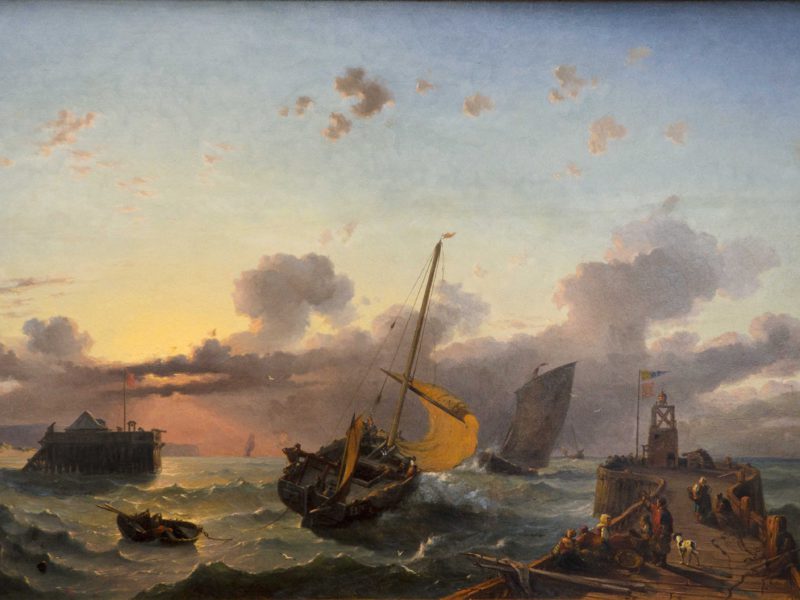“Feast of Balthazar” , atelier Frans Francken II (1581-1642)
Out of stock
This magnificent festive scene is a representation of the “Feast of Balthazar”, directly inspired by Rembrandt’s painting (National Gallery, London), itself inspired by the biblical story of the Book of Daniel. It shows King Balthazar deciphering a mysterious inscription on a wall which begins with the words: Mene tekel…
Here the inscription appears at the top in the centre, in the cloudy night, apointed by a divin finger. Mene tekel or, according to the complete formulation, mene, mene, tekel, upharsin or Mane, Thecel, Phares (in Hebrew: מנא מנא ופרסין), is an inscription that appears on a wall in chapter 5 of the Book of Daniel, during the feast of Balthazar.
This writing of supernatural origin predicts the fall of Babylon, known for its extravagant decadence, depraved paganism and desecrating imperialism. Six centuries B.C., the king of Babylon Balthazar organised a feast for the nobles of his court, in the presence of his wives and concubines. While enjoying the luxury of the table, they praised the idols: “Gods of gold, silver, bronze, iron, wood and stone.” The precious tableware they use was stolen from the temple of Jerusalem by Nebuchadnezzar II, Balthazar’s father: by drinking wine from these sacred vessels, the guests blaspheme the God of the Jews. While the feast is thus in full swing, a cloud appears. A hand comes out of it and starts to trace a curious inscription. The king is overwhelmed by the prodigy who leaves him worried. Only, he does not understand the meaning of the coded Hebrew letters. He then calls Daniel (the one who defended Susanna against the old men). The prophet reveals to him the meaning of the epigraph “Mané Thécel Pharès”, “Counted, weighed, divided”, or “M nê, m nê tgêl ûpharsin”: “You have been weighed and you do not weigh, your goods will be divided”. King Balthazar dies the same evening.
Oil on copper, attributed to the workshop of Frans FRANCKEN II (1581-1642). Excellent condition.
Size : H 32cm x W 25cm – H 46cm x W 38 cm
Lit: Frans Francken II (1581-1642), known as the Younger One, was a member of a painter’s family in Antwerp. He is the fourth and most famous son of Frans Francken I, whose pupil he was; it is difficult to tell them apart, as their styles are very similar. His production consists mainly of paintings dealing with mythological or allegorical subjects and historical and religious scenes. He also paints landscapes and still lifes, always using a very refined technique that is very popular with collectors.
This iconography was a great success after Rembrandt’s painting (1635), Frans Francken I and his son Frans Francken II produced several versions such as the one kept in the Musée de la Ville de Poitiers
Out of stock
Contact us